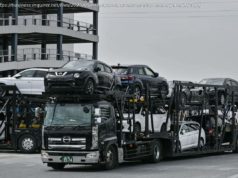China’s Bay Area has been compared with bay areas in San Francisco, New York and Tokyo Bay
-The plan to connect Hong Kong, Macau and mainland China was first proposed in 2011. – In March 2017, Chinese Premier Li Keqiang announced a plan for the “development of a city cluster in the Guangdong-Hong Kong-Macau Greater Bay Area () ”. – The plan is part of China’s urbanisation push, to have clusters leveraging the strength of first-tier cities to boost growth in the less developed ones. – The 56,500 square kilometre Bay Area encompasses 11 cities – Hong Kong, Macao, Guangzhou, Shenzhen, Zhuhai, Foshan, Zhongshan, Dongguan, Huizhou, Jiangmen and Zhaoqing. – China’s Bay Area has been compared with the bay areas of San Francisco, New York and Tokyo. The area in Tokyo covers 9,076 sq km and is home to 31 million people, while the San Francisco Bay Area covers 18,000 sq km and has a population of 7.6 million. – The combined GDP of China’s Bay Area reached US$1.36 trillion in 2016, with an estimated population of 66.71 million. The area recorded more than 65.2 million TEUs (twenty foot equivalent units) of annual container throughput and handled 175 million passengers. – Four of the world’s top 100 universities and 16 of the Top 500 companies are located in the area. – In the Bay Area, there are two key railway lines: the Beijing-Guangzhou railway and the Beijing-Kowloon railway. One of China’s four biggest airports — the Baiyun Airport of Guangzhou — is also situated here. – The most controversial part of the plan is the 72.6 billion yuan (US$10.6 billion) Hong Kong – Zhuhai – Macao Bridge, which connects Hong Kong, Zhuhai City of Guangdong Province with Macao. China’s central government provided 7 billion yuan in funding, while Hong Kong and Macao gave 6.75 billion yuan and 1.98 billion yuan respectively, for a combined 42 per cent of the construction cost. Bank loans will finance the remaining 58 per cent of the cost. Additionally reporting by Yifan Wu.






